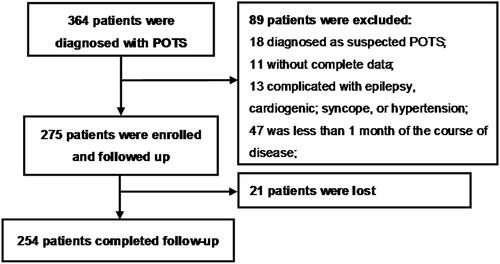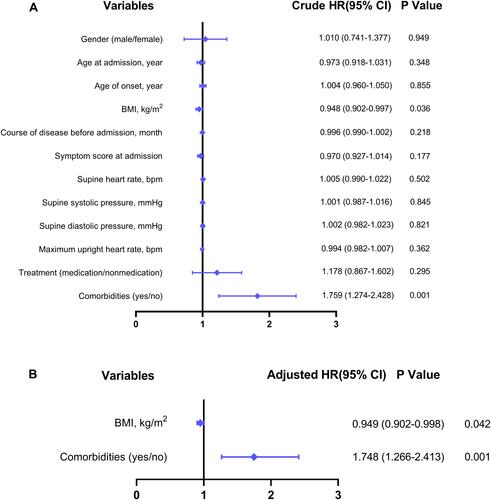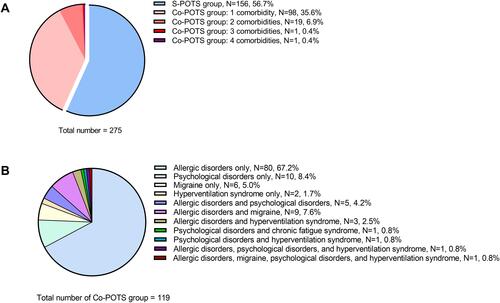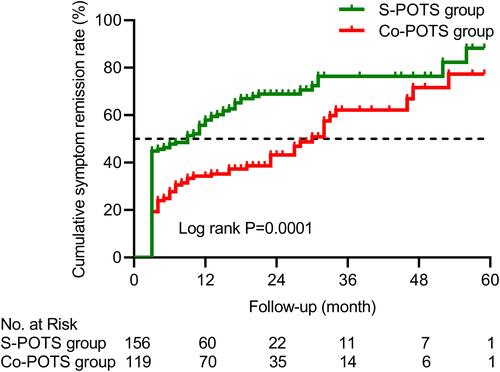Figures & data
Table 1 Clinical Characteristics of Patients in the S-POTS Group and Co-POTS Group
Figure 1 Flow-chart of patient inclusion. Of 364 patients with POTS, 89 were excluded according to the exclusion criteria, and the remaining 275 patients were followed up. Finally, 254 patients completed follow-up.

Figure 2 Forest plot for the outcomes of univariate and multivariate Cox regression model analysis on risk factors for prognosis in children with POTS. (A) Forest plot presenting the crude hazard ratio for the outcomes of univariate Cox regression model analysis. (B) Forest plot presenting the adjusted hazard ratio for the outcomes of multivariate Cox regression model analysis. Each blue rhombus represents the HR value of the corresponding variable, and the intersecting blue transverse line represents the 95% CI.

Table 2 The Spectrum of Allergic Disorders in Comorbidities of Pediatric POTS
Table 3 The Spectrum of Psychological Disorders in Comorbidities of Pediatric POTS
Figure 3 The spectrum of comorbidities in children with POTS. (A) The proportion of patients complicated or not complicated with comorbidities. (B) The proportion of different comorbidities of patients in the Co-POTS group.

Figure 4 Influence of comorbidities on prognosis of pediatric POTS. The K-M curves showed the cumulative symptom remission rate in the S-POTS and Co-POTS groups during follow-up. The green curve and red curve represent the cumulative symptom remission rate for the S-POTS group and Co-POTS group, respectively.

Table 4 Evaluation of Rehospitalization Burden in Children with POTS
